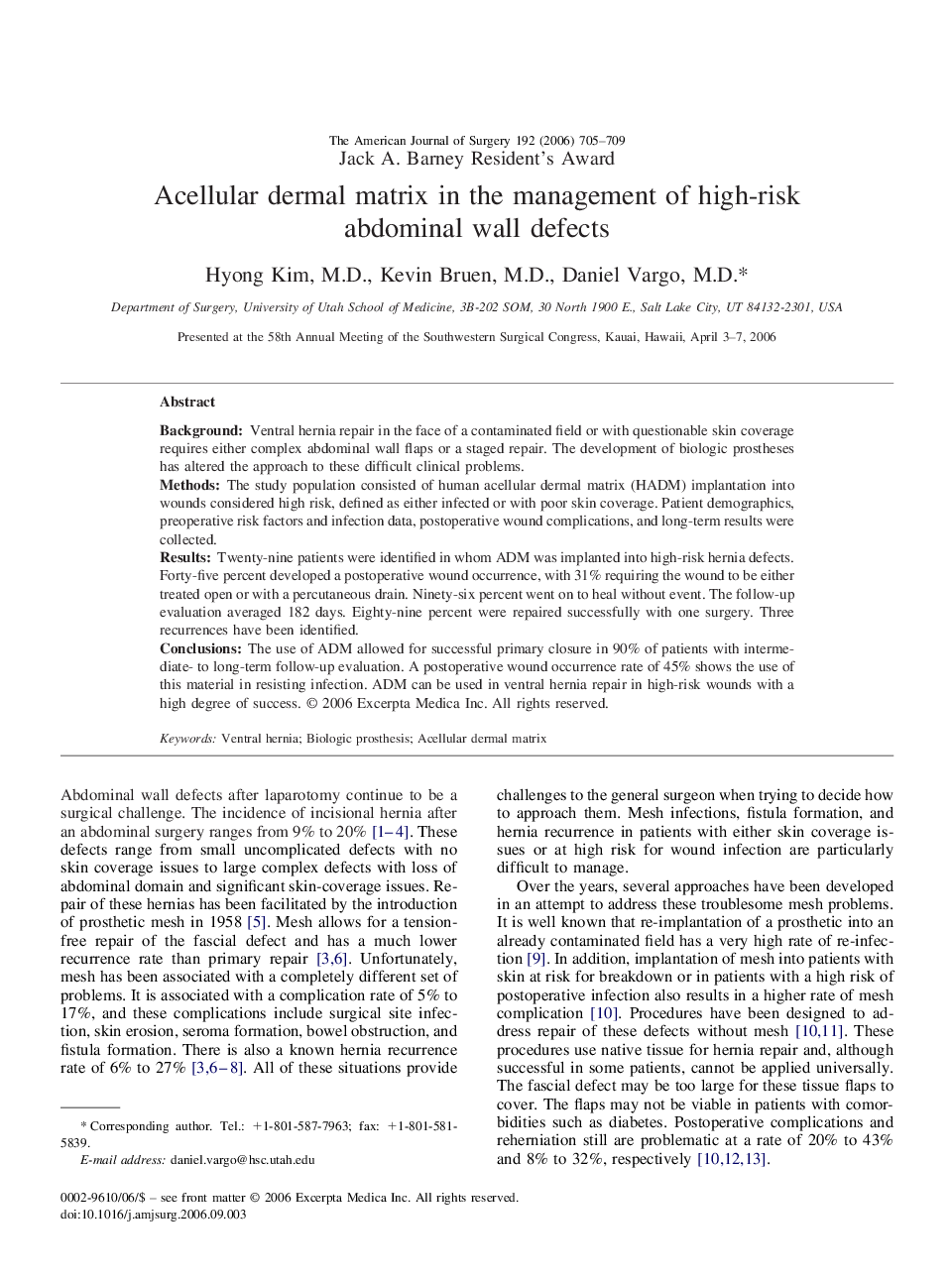| کد مقاله | کد نشریه | سال انتشار | مقاله انگلیسی | نسخه تمام متن |
|---|---|---|---|---|
| 4281733 | 1611599 | 2006 | 5 صفحه PDF | دانلود رایگان |

BackgroundVentral hernia repair in the face of a contaminated field or with questionable skin coverage requires either complex abdominal wall flaps or a staged repair. The development of biologic prostheses has altered the approach to these difficult clinical problems.MethodsThe study population consisted of human acellular dermal matrix (HADM) implantation into wounds considered high risk, defined as either infected or with poor skin coverage. Patient demographics, preoperative risk factors and infection data, postoperative wound complications, and long-term results were collected.ResultsTwenty-nine patients were identified in whom ADM was implanted into high-risk hernia defects. Forty-five percent developed a postoperative wound occurrence, with 31% requiring the wound to be either treated open or with a percutaneous drain. Ninety-six percent went on to heal without event. The follow-up evaluation averaged 182 days. Eighty-nine percent were repaired successfully with one surgery. Three recurrences have been identified.ConclusionsThe use of ADM allowed for successful primary closure in 90% of patients with intermediate- to long-term follow-up evaluation. A postoperative wound occurrence rate of 45% shows the use of this material in resisting infection. ADM can be used in ventral hernia repair in high-risk wounds with a high degree of success.
Journal: The American Journal of Surgery - Volume 192, Issue 6, December 2006, Pages 705–709